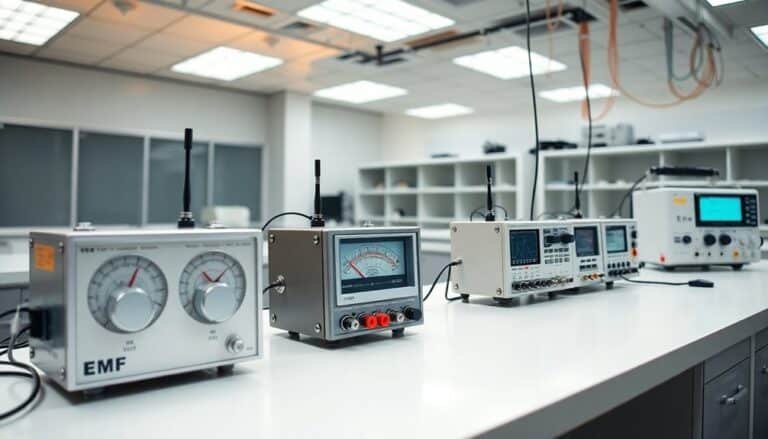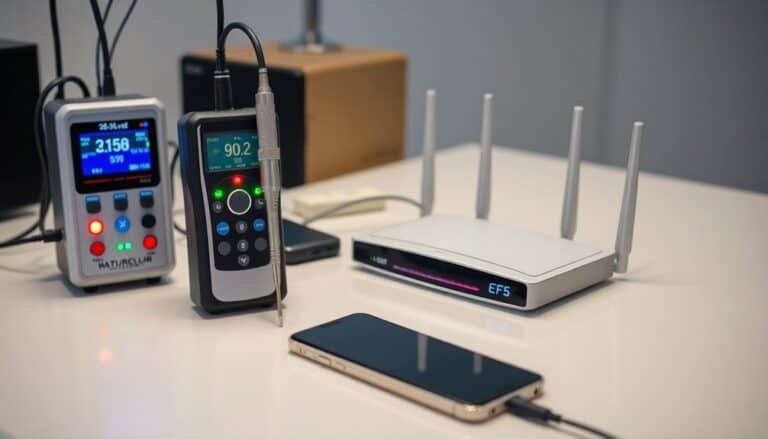Importance of SAR Values and Phone Safety
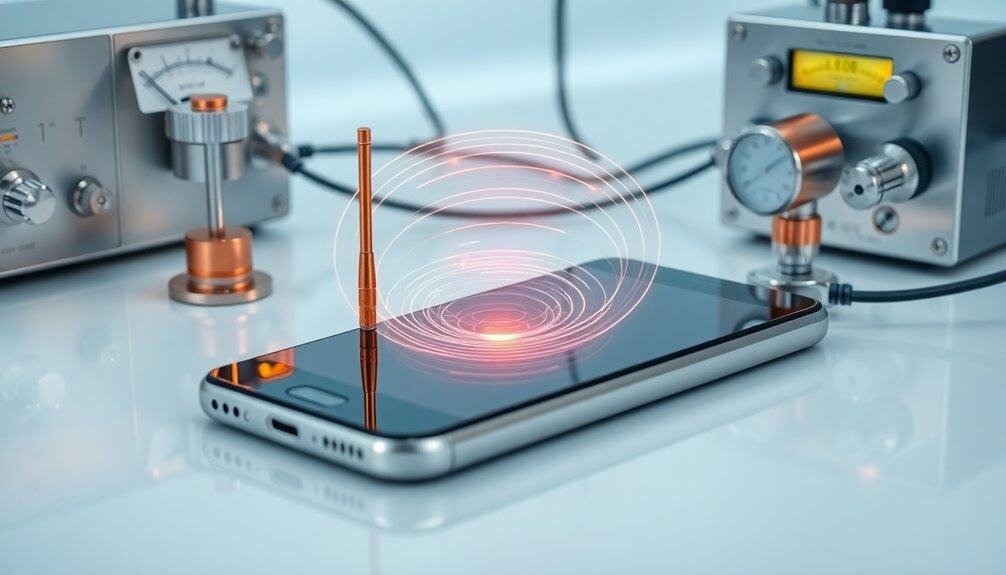
Understanding SAR values is crucial for phone safety, as they indicate the radiofrequency energy absorbed by the body. Regulatory bodies like the FCC and ICNIRP ensure devices meet safety standards, with SAR values available on manufacturer websites or in phone manuals.
Standardized testing confirms the accuracy of these values, aiding informed decisions about device usage. Familiarize yourself with checking SAR values, compliance, and related health concerns for better awareness.
Disclaimer: As an affiliate, I may collect a share of sales from the links on this page.
Understanding SAR and Its Significance
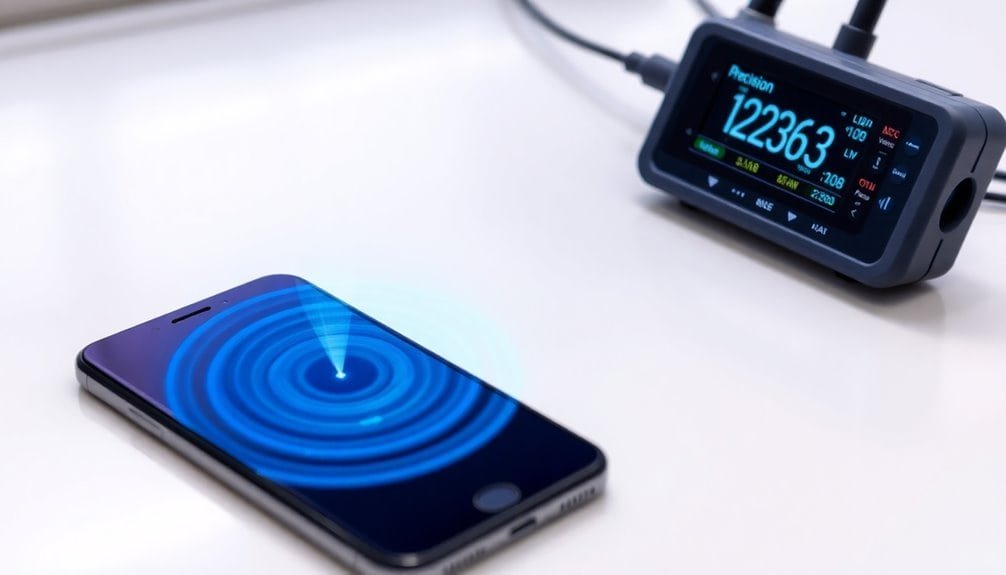
Specific Absorption Rate, commonly known as SAR, plays an essential role in evaluating the safety of wireless devices. SAR measures the amount of radiofrequency energy absorbed by the body, expressed in watts per kilogram (W/kg). This measurement is vital when examining devices like cell phones. Different phone models exhibit varying SAR values, depending on factors such as usage scenarios. Testing for SAR involves special phantoms that simulate human tissue absorption. Additionally, understanding the factors affecting SAR can help consumers make informed decisions regarding their device usage and safety. Furthermore, it is crucial to be aware of the safety limits set by the FCC, as these regulations guide manufacturers in creating safer devices.
Safety Standards and Compliance
To guarantee user safety, regulatory bodies like the FCC in the United States and ICNIRP in Europe establish stringent safety limits for Specific Absorption Rate (SAR).
In the U.S. and Canada, the limit is 1.6 W/kg, measured from 1g of tissue. In contrast, European standards allow a limit of 2.0 W/kg, measured from a larger 10g tissue volume.
Manufacturers must secure local certifications, like FCC or ISED approval, to sell devices. Compliance assures that mobile devices meet safety requirements, which can vary by region. Moreover, ensuring that all models meet cell phone SAR testing standards is crucial for consumer safety and regulatory acceptance across markets.
The Testing Methodology for SAR Values
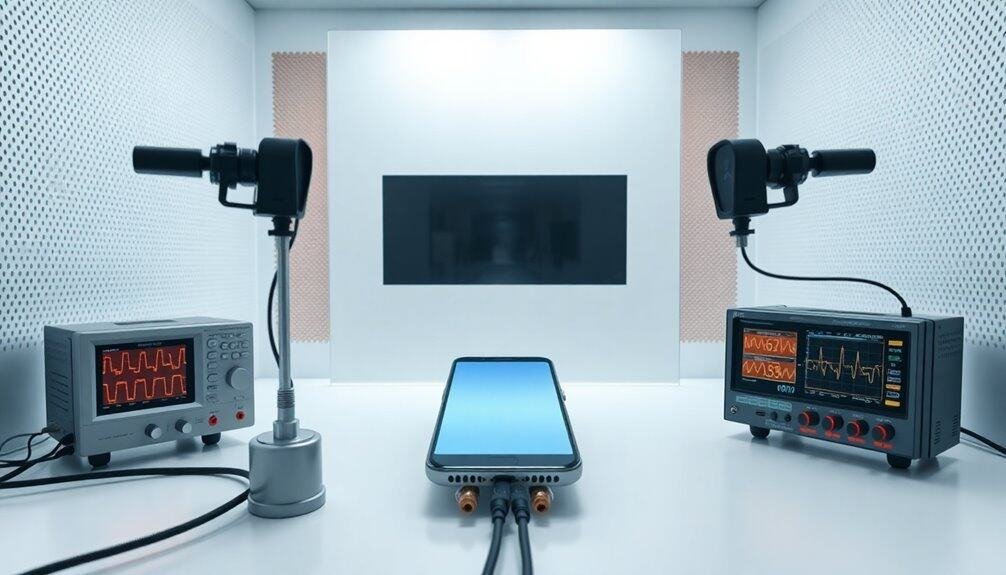
When evaluating the safety of mobile devices, rigorous testing methodology is essential. SAR testing employs standardized human models filled with liquids to simulate tissue absorption. A robotic probe measures RF exposure at precise locations, ensuring accuracy. Devices are tested in multiple real-world positions and operated at their highest power levels. Measurements follow a grid-like pattern, allowing thorough data collection. Initial system checks verify functionality, while conducted power measures ascertain maximum transmission strength. Mobile SAR value testing is crucial to assess the RF energy that biological tissues absorb, influencing product safety evaluations. Advanced software aids in analyzing results, ensuring compliance with regulatory standards. This controlled environment assures consistent and reliable SAR value reporting, vital for device safety.
Health Concerns Related to RF Exposure
As mobile technology becomes integral to daily life, understanding health concerns related to radiofrequency (RF) exposure is vital. RF exposure can be thermal or non-thermal, with thermal effects involving tissue heating.
The International Agency for Research on Cancer (IARC) doesn’t classify RF radiation as carcinogenic based on current evidence, although some studies hint at neurological impacts. Many epidemiological studies find no significant links between RF exposure and brain tumors.
In addition, research indicates alterations in DNA methylation and potential behavioral changes with long-term exposure. Still, more research is essential to understand the long-term health effects fully. Furthermore, the cumulative effects of constant exposure to multiple devices are not well understood, highlighting the need for further investigation into RF safety.
How to Check SAR Values for Your Phone
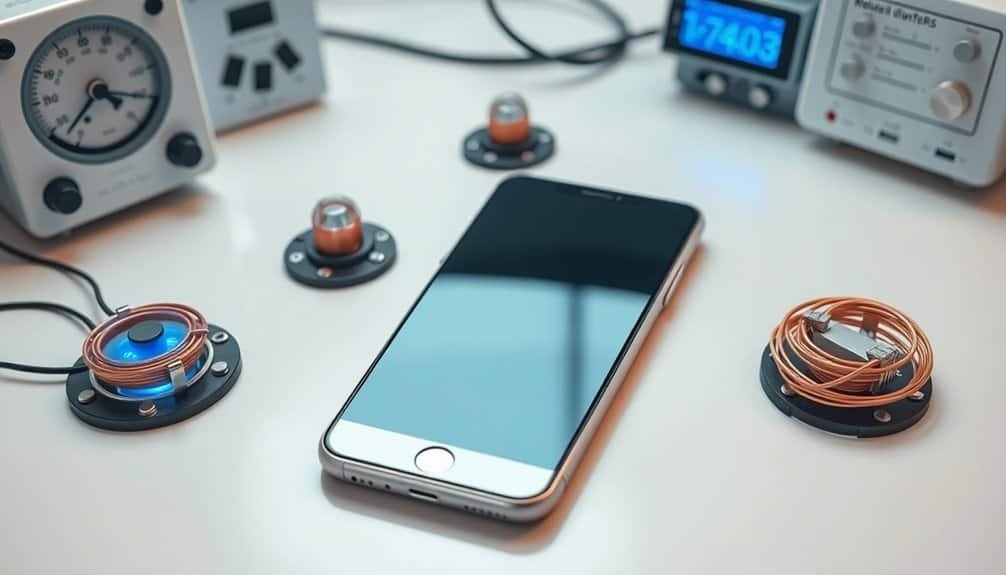
Understanding how to check the Specific Absorption Rate (SAR) values for your phone is imperative for making informed decisions about device safety.
You can find SAR values on websites like Sarchecker.com, or by visiting the official websites of manufacturers like Samsung. The Federal Communications Commission (FCC) requires specific grantee and product codes for checks.
You may also find SAR values in your phone manual or printed on the device itself. Some phones allow you to check SAR by dialing *#07#.
Finally, online forums and specialized databases provide valuable comparisons across different models, aiding in your assessment. Additionally, be aware that the maximum SAR allowed in the EU is 2.0W/kg, which is crucial for ensuring safety standards.
Regulatory Frameworks Governing SAR Limits
Regulatory frameworks governing SAR limits are essential for guaranteeing cell phone safety across various regions.
Different countries enforce distinct SAR standards; for instance, the US and Canada mandate 1.6 W/kg over 1g of tissue, while the EU allows 2.0 W/kg over 10g.
In Canada, compliance merges CE and FCC requirements, resulting in stricter regulations. Devices undergo testing for regulatory approval, considering realistic usage conditions.
Occupational devices can have different thresholds but must restrict public access if unsafe.
Global compliance creates challenges; manufacturers must navigate these varying standards to guarantee safety for consumers across international markets.
Frequently Asked Questions
How Do SAR Values Differ Between Smartphones and Other Devices?
You’ll notice SAR values vary widely; smartphones can range from 0.13 W/kg to 1.79 W/kg, while wearables typically have lower levels. Other devices, like tablets and cordless phones, also present differing SAR values and standards.
Can SAR Values Vary by Phone Model or Manufacturer?
SAR values definitely diverge by device design and manufacturer. You’ll notice various brands have unique signatures—some sport lower SAR levels while others present higher. Picking products tailored to your preferences is key!
What Are the Consequences of Exceeding SAR Limits?
Exceeding SAR limits can lead to harmful thermal effects, like tissue damage, and non-thermal effects, including potential cancer risk. You must remain aware of these consequences to make informed choices about your phone usage.
Are There Specific Groups at Higher Risk From RF Exposure?
Yes, certain groups, like children and pregnant women, are at higher risk from RF exposure due to their developing bodies. Additionally, workers in high-RF environments experience increased risks, highlighting the need for awareness and safety measures.
How Often Does the FCC Update SAR Guidelines?
The FCC updates SAR guidelines periodically, usually in response to new research and tech advancements. By seeking public feedback and expert input, they guarantee regulations stay relevant and effective for evolving wireless standards.
Conclusion
Understanding SAR values is crucial for safety and informed choices. It ensures devices meet safety standards and comply with regulatory limits.
Evaluating SAR helps assess potential health risks. By following regulatory frameworks, consumers are protected.
Prioritizing knowledge of SAR values and safety standards empowers you to make informed decisions. Staying informed is as important as staying connected, so choose wisely for a safer mobile experience.

